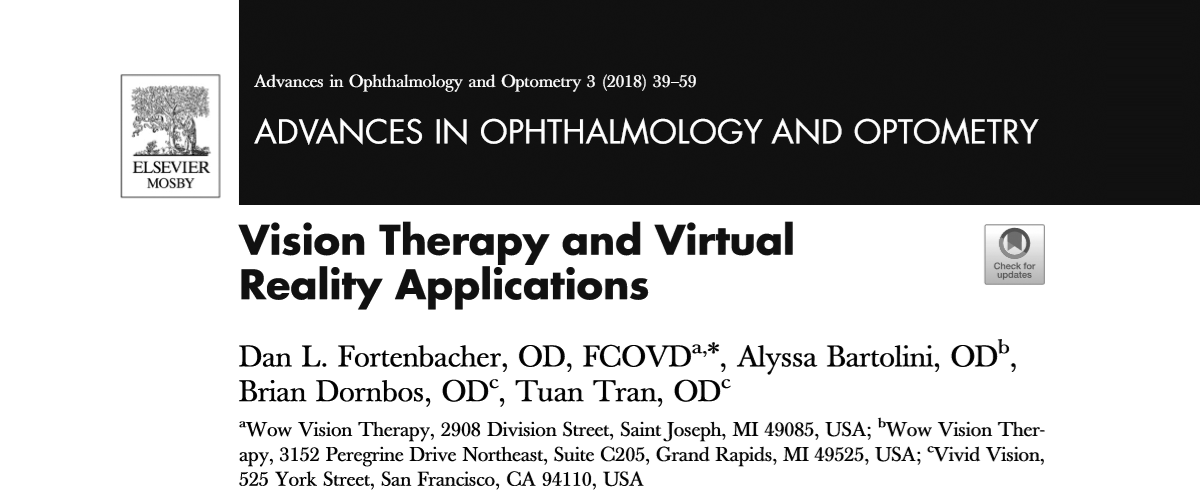Advances in Ophthalmology and Optometry: Applying Virtual Reality Technology in the Clinic

Drs. Dan Fortenbacher and Alyssa Bartolini of WOW Vision Therapy in Michigan, along with Dr. Tuan Tran and myself from Vivid Vision, recently authored a chapter in Advances in Ophthalmology and Optometry titled “Vision Therapy and Virtual Reality Applications” (take a look! https://www.sciencedirect.com). My experience with VR comes from two points of view. First, I’ve always enjoyed casual video game play for entertainment. Naturally, when VR became available for gaming I was excited to give it a try. The second point of view comes from my work as an optometrist and part of the team at Vivid Vision. At Vivid, we ask, “how can VR be used in eye care?”
No doubt many of the readers of this post have had some degree of exposure to VR. In fact, I’d venture to say that VR has become ubiquitous - thanks to companies such as Oculus, HTC, Sony, Google, Samsung, etc. that have developed fantastic consumer gaming/entertainment products with affordable price points.
The entire concept of VR relies on immersion
The entire concept of VR relies on immersion - the more believable the environment feels, the greater the level of perceived immersion. From a gaming standpoint, it feels like you are in a game rather than just playing a game. The level of detail required from a software development standpoint is amazing - sensory cues for vision, balance, sound, and touch all must be integrated into a virtual world to promote immersion. Fail to account for one of these and the user experience is significantly diminished.
So how does VR fit into eye care? In our chapter, we discuss in detail how VR fits into one important eye care component, namely vision therapy (VT). Dr. Fortenbacher writes, “Vision therapy has evolved to include instrumentation and techniques that build the relaxation, integration, flexibility, range, and stamina of visual skills that are necessary to improve patients’ quality of life.” One can see why VR is a natural fit for doing VT!
VR provides a unique advantage over “traditional” activities used in a VT clinic. How so? Because the VR experience is computer-controlled, the two eyes’ images can be manipulated in ways that help a patent use both of their eyes together, which is essential for treating amblyopia, strabismus, stereo depth deficiency, or convergence insufficiency. The chapter describes how VR has been used to rehabilitate amblyopic patients by using “a combination of dichoptic stimulus presentation, interocular contrast balance, and manipulation of monocular and stereoscopic cues.”
VR applications in vision therapy can be a powerful addition to the vision therapy toolkit
Citing Dr. Fortenbacher again, “VR applications in vision therapy can be a powerful addition to the vision therapy toolkit for doctors treating binocular vision problems.” I’ve found it fantastic and tremendously rewarding to see VR being used to enhance patients’ lives. We expect to see VR grow and progress in the field of VT.
Fortenbacher, Dan L. et al. Vision Therapy
